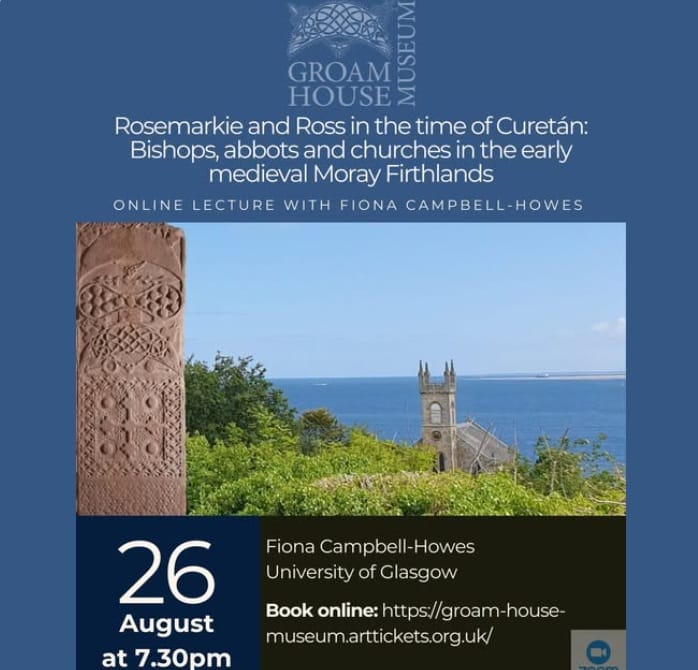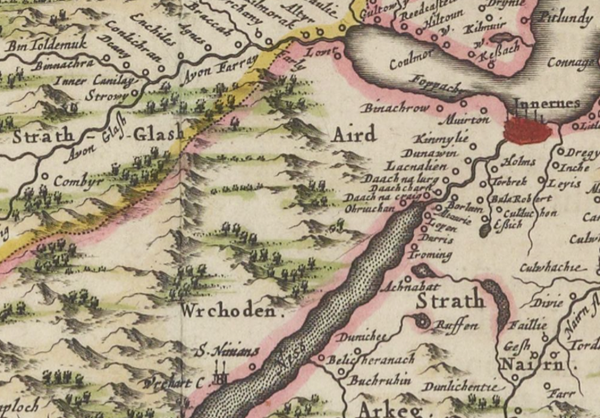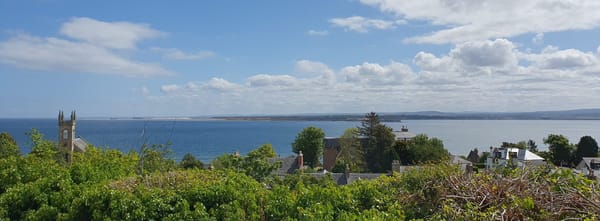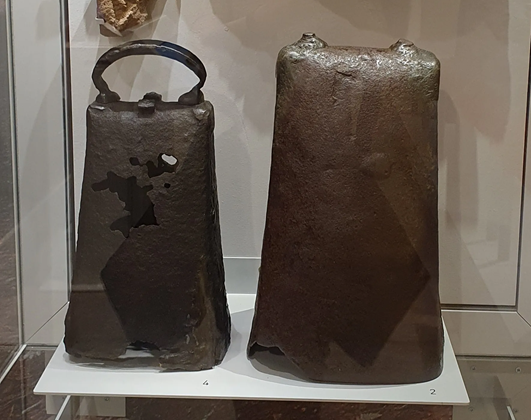Three (or four) upcoming talks
Details of upcoming talks I'm giving about my PhD research into the early church in the Moray Firthlands, Scotland.

I haven’t been blogging recently, partly because I’m neck-deep in PhD research, and partly because all of my thinking and writing efforts are going into a series of talks that I have coming up.
But this doesn’t mean I haven’t been down any interesting rabbit-holes – far from it! I’ve spent this past year hunting for evidence of the early church in the Moray Firthlands, and I’m quite excited about what I’ve been able to uncover so far.
I’ll present some of the outcomes of this research in my upcoming talks, so I’m posting details here in case you’re interested in attending.
Three are confirmed, and one is subject to my abstract being accepted, so may not actually happen.
If you do decide to attend one or more of these, I look forward to seeing you there!
1) Groam House Museum Annual Academic Lecture
Tuesday 26 August 2025, 7.30pm UK, via Zoom
Tickets £3 members/students | £6 non-members – Booking link
Rosemarkie and Ross in the time of Curetán: Bishops, abbots and churches in the early medieval Moray Firthlands
Since Aidan MacDonald delivered the 1992 Groam House Lecture on ‘Curadán, Boniface and the Early Church of Rosemarkie’—still the definitive work on Curetán—our understanding of the ecclesiastical landscape in the early medieval Moray Firthlands has deepened considerably.
Excavations at Portmahomack and Kinneddar have revealed much about the chronology and workings of the region’s major monasteries; toponymists have shed new light on the place-name elements cill, both and login; a new Pictish symbol-bearing cross-slab has been discovered at Logie Wester; and we can more confidently connect the 7th-century bishop Curetán with Rosemarkie. There is even growing evidence that the Book of Kells itself may have been produced in Easter Ross.
In this lecture, I’ll build on these advances to provide an up-to-date overview of the early church in the region. Drawing on my ongoing interdisciplinary PhD research, I will consider new toponymic, sculptural, material, landscape and textual evidence for the early church in the region, including new insights into Curetán-Boniface and his medieval cult.
Additional info: Since I submitted my title and abstract, I’ve identified what I think may be an overlooked early medieval source for eighth-century northern Pictland. Excitingly, it includes a place-name that I think has been inaccurately interpreted until now, and which may point to an important and hitherto-unexplored ecclesiastical site in the Firthlands. I'll share details on the 26th!
2) Highland Archaeology Festival Annual Conference
Saturday 27 / Sunday 28 September 2025, Inverness | Booking link
(My slot is at 12.15 on Sunday.)
Agrum qui Airchartdan nuncupatur: Evidence for early ecclesiastical activity in Urquhart, the Aird and Strathglass
In his Life of St Columba, written c. 700, Adomnán of Iona shows Columba demonstrating his holy powers at identifiable locations on Loch Ness, from Urquhart Bay to Bona. Yet there is surprisingly little evidence for a Columban cult in this area.
This paper looks at why Adomnán might have taken care to place Columba in these specific locations, and compares his account with what we can infer about the early church in Urquhart, the Aird and Strathglass from place-names, textual evidence and sculpture.
Additional info: Research for this one has led me to reconsider the hydronym stagnum Lochdae, which appears in the chapter heading (but not the text itself) of Book 1, chapter 4 of the Life of St Columba. I’ll look at a possible new interpretation for this place-name that would fit with the context of the talk.
3) Scottish Place-Name Society Autumn Conference
Saturday 8 November 2025, all day, via Zoom | Details
(This one isn’t confirmed, so may not happen – but I’ve included it in case it does.)
Kincurdy, Cuthilcurdy, Hill o’ Hirdie: The Scotticisation of an eighth-century saint?
The area around Rosemarkie on the Black Isle has long been noted as a cult centre for St Curetán, a bishop who is reliably attested as being active in the Moray Firthlands around the turn of the eighth century.
Three Black Isle place-names appear to preserve his name in Scotticised form: Kincurdy, Cuthilcurdy and Hill o’ Hirdie, suggesting that his cult survived into the late Middle Ages or later.
This paper will examine whether these names do contain Scotticisations of Curetán, and what they can tell us about the longevity of Curetán’s cult.
4) Nairn Literary Institute, 150th Anniversary Winter Talks
Monday 9 March 2026, 7.30pm, Nairn Community Centre | Website
A Tale of Two Cross-Slabs: The Kebbuck Stone, the Princess Stone and the Early Church in Nairnshire
No abstract for this one yet, but I’m really looking forward to giving a talk in Nairn, where I was last on stage c.1977, aged six or seven, as the youngest von Trapp child in the Nairn Amateur Light Opera Society’s production of The Sound of Music. (There will probably be less singing this time around, though I may still wear something fashioned from old curtains.)
Thanks as always for reading!



